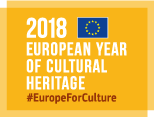There are 6 activities in this project.
Activity 1: Dashboard for users publishing 3D content
This activity will design, develop and test a dashboard for end users. This application will allow end users to upload 3D models of real-world cultural heritage objects to Sketch fab (a platform for users to publish, share, and discover 3D content on the web or in a virtual reality environment (VR)) while at the same time submitting metadata to Europeana. The dashboard will include a 3D content upload tool, forms to capture the metadata needed by Europeana including a direct link to the 3D content on Sketch fab, and tools to submit the metadata to Europeana. This dashboard will enable end users to easily upload and annotate cultural 3D content in a single place through a simple multi-stage process which hides the complexities of providing metadata and content to Sketchfab and Europeana. Users will be able to publish the 3D annotated content using the dashboard both to Europeana and Sketchfab using their own APIs and processes.
Activity 2: Storytelling tool
This activity aims to create a storytelling tool that will allow expert and non-expert end users to select and reuse content from Europeana, Sketchfab and other sources, and use this to create stories.
The storytelling tool will comprise of:
- A user workspace in which registered users will log-in to it to create their stories. This will include search, discovery and content selection tools that exploit the Europeana and Sketchfab APIs. These tools will enable end users to discover content quickly and easily and select items for re-use in their object based stories.
- Templates that end users can use to add selected items of content and text to create their stories. The Action will create a range of templates designed for specific target audiences (education, research, tourism, etc) and for different devices (on-line, on white boards, offline, e-book, etc.).
- An application to enable users to capture a position and point of view of a 3D model in Sketchfab by rotating and zooming the model until it is in the position that best illustrates the story being created. When reading the story, end users will be able to trigger the link by clicking buttons in the story, which will then automatically rotate the model to the predefined view point.
- A publishing service to allow end-users to publish their story on the storytelling platform with metadata, and also to export it in formats suitable for re-display in different environments e.g. mobile devices, eBooks, etc. The publishing service will provide a fallback for any media (3D, video, audio) that is not supported on a particular platform (e.g. by creating images to represent a view of a 3D model or video so that they can be included in an application)
- A workflow engine to drive the story. This will execute steps in a predefined sequence or according their type (e.g. 3D, VR, audio, text).
Activity 3: Guidelines
This activity will create guides for end-users to inform and encourage use of the dashboard and storytelling tools. The guides will demonstrate the uses of the tools to upload 3D media, how to select content from Europeana and Sketchfab and how to include these materials in the templates to create resources for education, tourism, research and cultural institutions both for use within the story-telling platform and on other devices. At least one template for each of the main use cases mentioned, ie. education, tourism, research and cultural institutions will be created. One of the aims of the guides is to encourage the creation of high-quality content made available through Europeana for re-use, to promote best practices and standards in the creation of content and metadata, and to promote open licencing.
The guidelines will cover:
- How to use the dashboard for uploading 3D models to Sketclifab and how to complete the metadata needed for Europeana
- Relevant standards and practices for the creation of 3D content and metadata
- How to use the storytelling tools to discover materials made available via Europeana and Sketchfab, how to use the templates to embed digital objects and to add text and annotations, and links to contextual resources.
The guidelines will demonstrate uses of the dashboard and storytelling tools for different target audiences including for education, tourism, research and the creative industries; linked to case studies developed under activity 4.
Activity 4: Case studies
This activity will create a set of case studies to demonstrate the use of the dashboard and storytelling tools to potential end-users. These case studies will provide concrete examples of how various audiences can engage with Europeana both by uploading 3D media via the dashboard and by selecting and re-using content to create stories and interactive materials for various audiences: education, tourism, research, creative industries.
Activity 5: Project management and communication
This activity provides both project management between the partners and with INEA, and also communication and dissemination of the Action and its results to stakeholders and the wider network and community.
Activity 6: Evaluation and business planning
This activity will inform the development of the dashboard, storytelling tools, guides and case studies, contribute to their evaluation, and establish business plans for the future.


